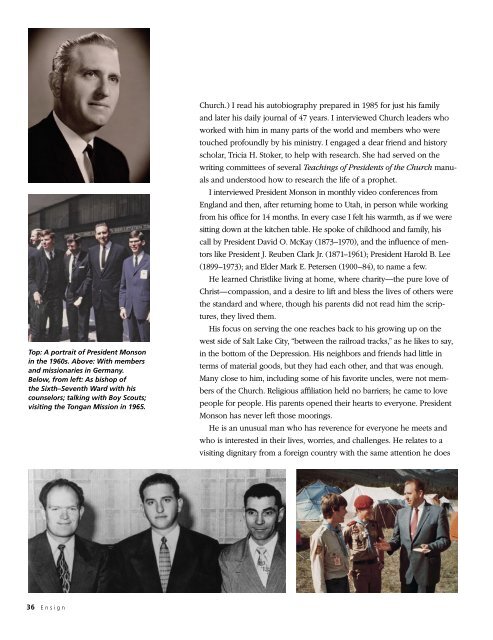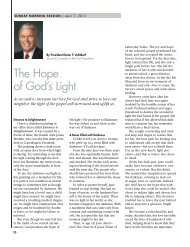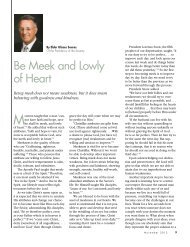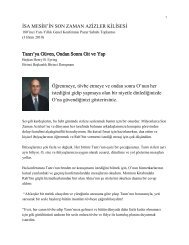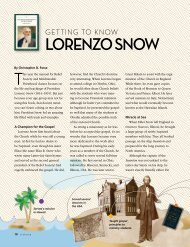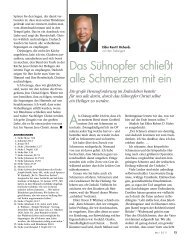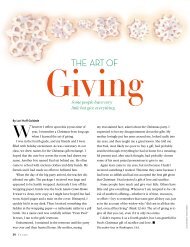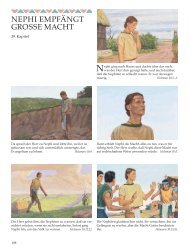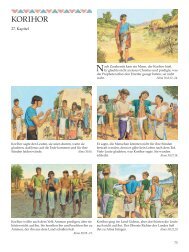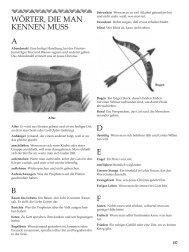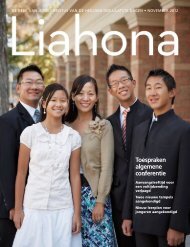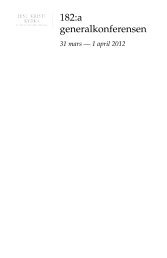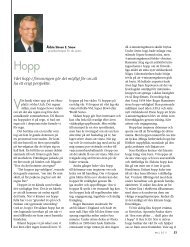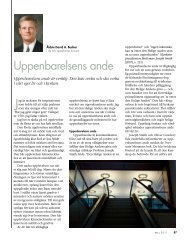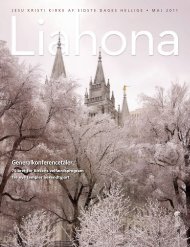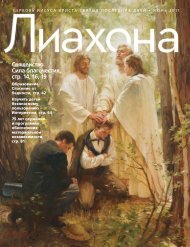March 2012 Ensign - The Church of Jesus Christ of Latter-day Saints
March 2012 Ensign - The Church of Jesus Christ of Latter-day Saints
March 2012 Ensign - The Church of Jesus Christ of Latter-day Saints
Create successful ePaper yourself
Turn your PDF publications into a flip-book with our unique Google optimized e-Paper software.
Top: A portrait <strong>of</strong> President Monson<br />
in the 1960s. Above: With members<br />
and missionaries in Germany.<br />
Below, from left: As bishop <strong>of</strong><br />
the Sixth–Seventh Ward with his<br />
counselors; talking with Boy Scouts;<br />
visiting the Tongan Mission in 1965.<br />
36 <strong>Ensign</strong><br />
<strong>Church</strong>.) I read his autobiography prepared in 1985 for just his family<br />
and later his daily journal <strong>of</strong> 47 years. I interviewed <strong>Church</strong> leaders who<br />
worked with him in many parts <strong>of</strong> the world and members who were<br />
touched pr<strong>of</strong>oundly by his ministry. I engaged a dear friend and history<br />
scholar, Tricia H. Stoker, to help with research. She had served on the<br />
writing committees <strong>of</strong> several Teachings <strong>of</strong> Presidents <strong>of</strong> the <strong>Church</strong> manuals<br />
and understood how to research the life <strong>of</strong> a prophet.<br />
I interviewed President Monson in monthly video conferences from<br />
England and then, after returning home to Utah, in person while working<br />
from his <strong>of</strong>fice for 14 months. In every case I felt his warmth, as if we were<br />
sitting down at the kitchen table. He spoke <strong>of</strong> childhood and family, his<br />
call by President David O. McKay (1873–1970), and the influence <strong>of</strong> mentors<br />
like President J. Reuben Clark Jr. (1871–1961); President Harold B. Lee<br />
(1899–1973); and Elder Mark E. Petersen (1900–84), to name a few.<br />
He learned <strong>Christ</strong>like living at home, where charity—the pure love <strong>of</strong><br />
<strong>Christ</strong>—compassion, and a desire to lift and bless the lives <strong>of</strong> others were<br />
the standard and where, though his parents did not read him the scriptures,<br />
they lived them.<br />
His focus on serving the one reaches back to his growing up on the<br />
west side <strong>of</strong> Salt Lake City, “between the railroad tracks,” as he likes to say,<br />
in the bottom <strong>of</strong> the Depression. His neighbors and friends had little in<br />
terms <strong>of</strong> material goods, but they had each other, and that was enough.<br />
Many close to him, including some <strong>of</strong> his favorite uncles, were not members<br />
<strong>of</strong> the <strong>Church</strong>. Religious affiliation held no barriers; he came to love<br />
people for people. His parents opened their hearts to everyone. President<br />
Monson has never left those moorings.<br />
He is an unusual man who has reverence for everyone he meets and<br />
who is interested in their lives, worries, and challenges. He relates to a<br />
visiting dignitary from a foreign country with the same attention he does


